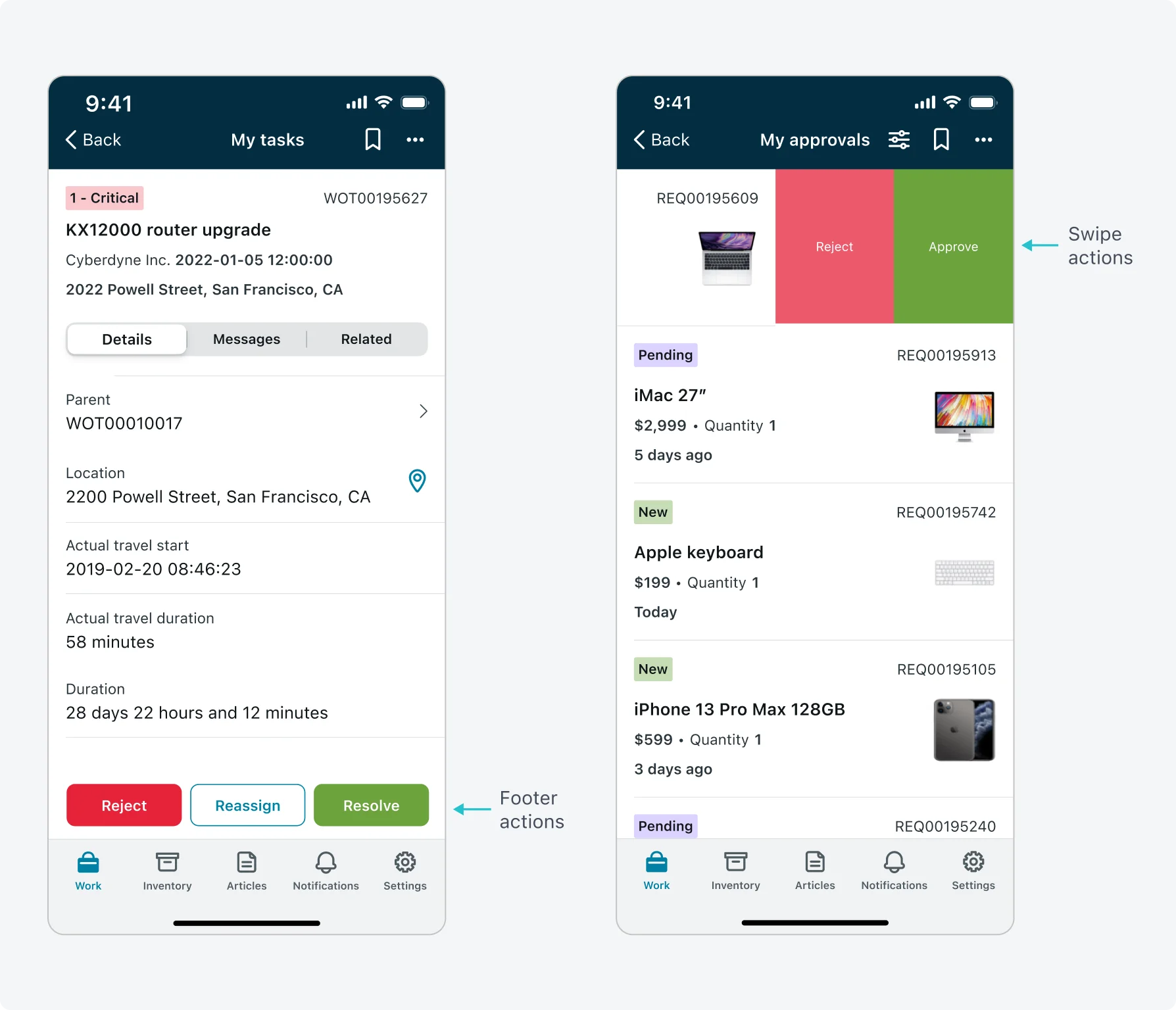Overview
Users can perform actions which change data, navigate to new screens, open mail, make phone calls, or open URLs.
Action function
Use action functions to add, edit or delete records on your instance.
- An action can be generic and include multiple fields like Edit, or be focused on a specific operation that includes a single field. For example, a “Reject” action can include a string field where the user can input the reason for the reject. Use an overlay representation for actions which include only one string input parameter.
- Use Screen UI Policies when creating an action function with multiple parameters, give your users the information they need when they need it. For example, for an edit action add the reject reason only if the state was changes to Rejected.
- Use signature credential if required before action submissions. You can add an Acknowledgment Message as well prior to action submission.
- Messages disrupt the user experience and should only be used in important situations like destructive actions (such as delete) or notifying users about problems. Use Confirmation and Success messages infrequently to ensure that your users take them seriously.
- Keep the number of action functions limited while keeping each action focused on the needed use cases. Use conditions to limit when functions appear to reduce the number of functions shown to your users at once.
Action completion
We recommend defining the desired app behavior after an action is completed to achieve the required flow. The desired app behavior include remaining on the same screen after an action has been triggered or navigating the user to another screen.
Presented screen upon action completion:
- Return one screen back from the place the action was initiated. Consider using this option when after this action the user does not need to continue and work on the record, for example: Mark as completed action.
- Stay on the current screen. Consider using this option if after an edit action users would expect to see the change they just made or continue and working on the current record.
- Navigate to a new destination screen. Consider using this option for new record creation or for creating a flow.
Supported options for navigating to screens:
- You can navigate to any screen. For new actions we recommend navigating to a record screen of the new record created.
- Navigation is supported automatically without user interaction or by defining a success message with a navigation button so the users can decide if they would like to navigate.
Actions and functions can be performed with:
- Input form screen
- Swipe actions
- Footer actions
- Top menu navigation
- Jump to navigation
- Smart buttons
- Deep links
Action colors
Associate positive and destructive colors to your functions to indicate their type of behavior. Use the default colors or define colors to your instance using mobile theming.
- Positive actions - like Approve, may have a positive button emphasis. The default color is green.
- Destructive actions - like Cancel or Delete, may have a destructive button emphasis. The default color is red.
- Natural actions - (which are neither positive or destructive), like Submit, are based on the primary theme color.
Color functions are supported for footer functions, swipe actions, top actions, and quick actions.

Access control
You can restrict access to Functions for specific users by assigning User Roles. Learn more.
